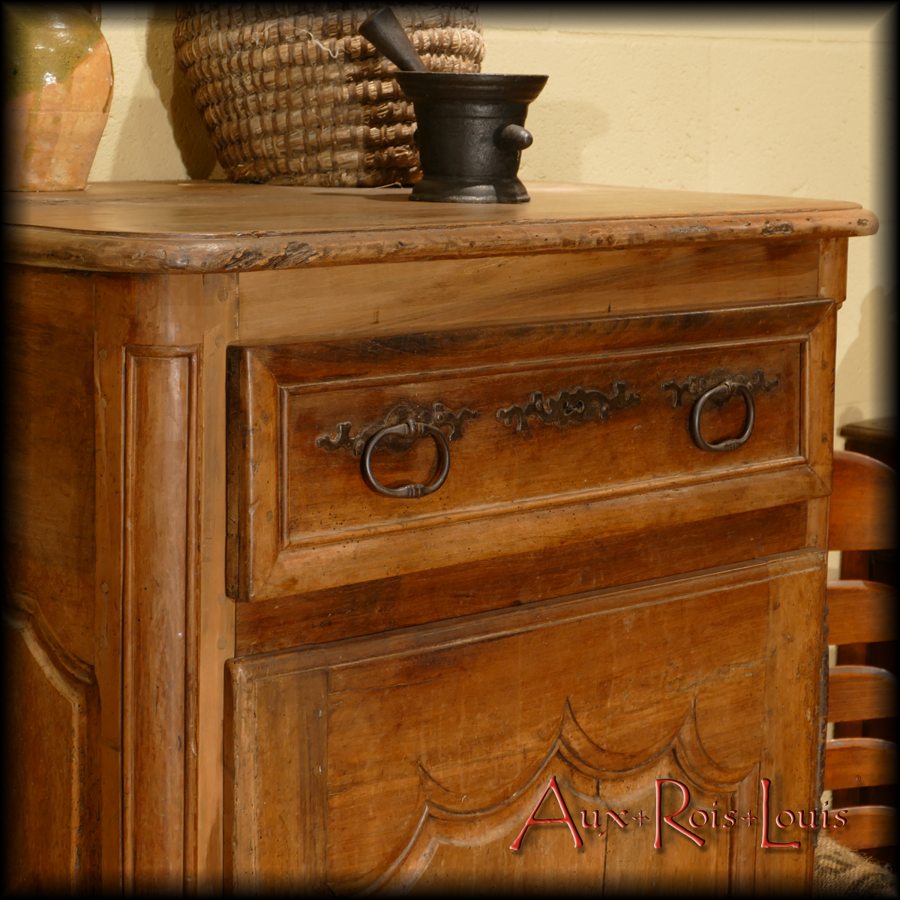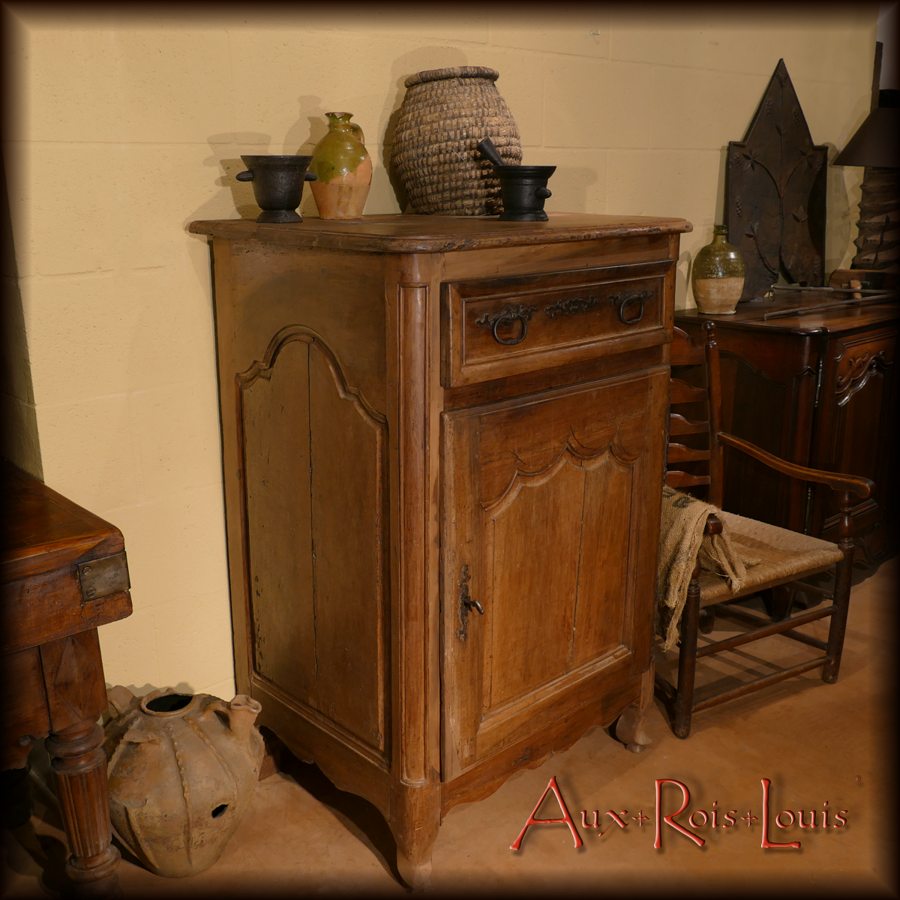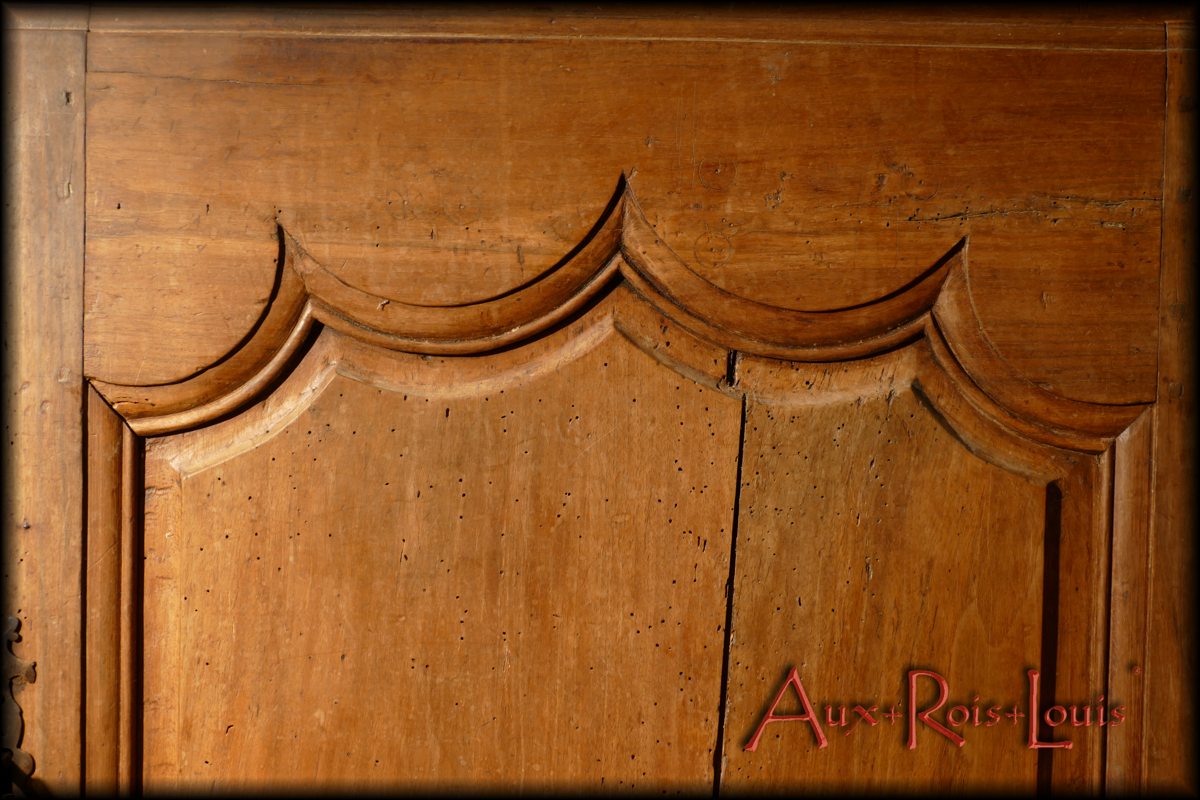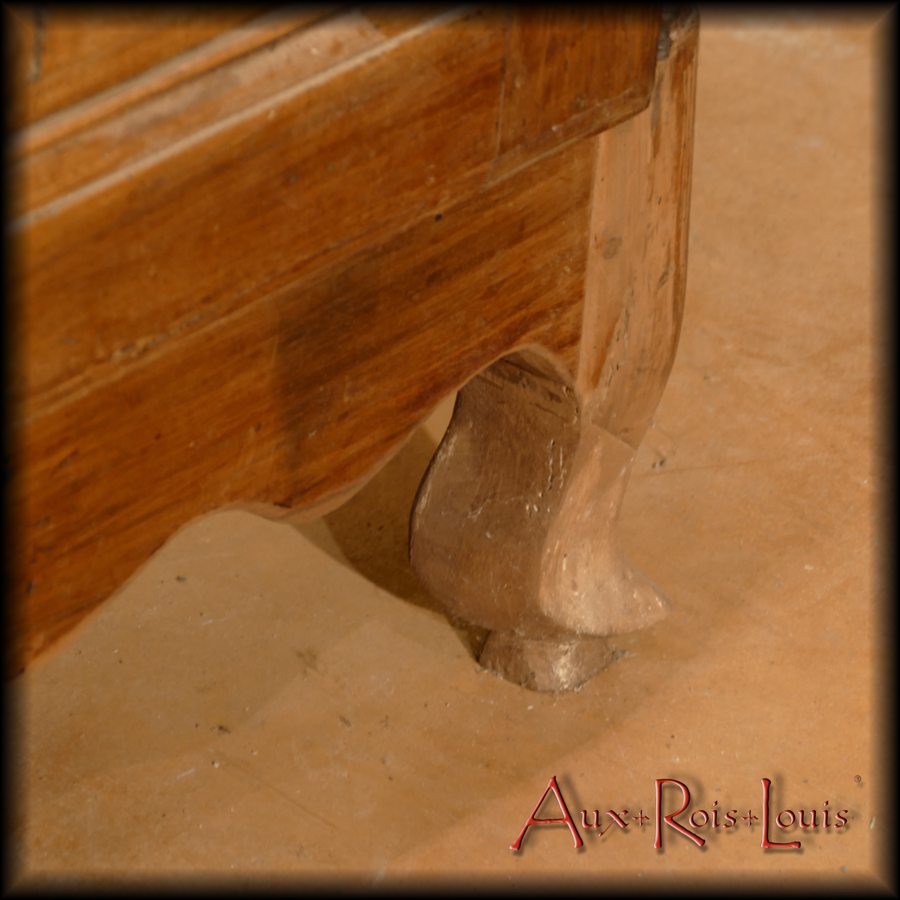HISTORY OF THE CONFITURIER OR HOW GASTRONOMIC MORES INFLUENCE FURNITURE
The history of jam cabinets coincides with that of the arrival of sugar in homes. We are at the end of the 17th century and “white gold”, until then the preserve of apothecaries who sell it at gold prices in their pharmacies, finally arrives at grocers and becomes much more accessible.
The jams which until then designated all the preserves of herbs, flowers, fruits and vegetables obtained by immersing them in honey, vinegar and more rarely therefore in sugar, will develop and integrate the sweets that will be named 19th century confectionery, namely fruit jellies, candied fruit, marzipans and sugared almonds. And to store all these “confitures” as they were called then, you need a “confiturier” who designates the piece of furniture where they can be stored.
It is the wealthy families who, having the first access to sugar, will benefit from the first confituriers.
Confiturier bourgeois en noyer blond – XVIIIᵉ – Périgord
The one we present to you here corresponds exactly to this moment in the history of regional furniture.
Indeed, certain notorious assets attach it to a client who obviously succeeded in climbing into the middle class of Périgord during the 18th century, thanks to a prosperous activity. We can imagine him at the head of a large agricultural estate or an important mill, or even the owner of foundries or tanneries, activities then in full swing.
First clue: the use of walnut planks, a noble essence then reserved for wealthy families. These boards came from their own plantations and were stored on site for complete drying, which could last at least twenty years.
Second clue: the quality of execution which surpasses that of a raw country piece of furniture.
This jam cabinet is not only usual, it gracefully declines the Louis XIV and Louis XV styles which are intertwined there.
- The rectilinear moldings of the drawer honor the Louis XIV style.
- The crossbeams of the facade and sides, all scalloped, introduce the roundness and charm emblematic of the Louis XV style.
- On the door, a three-pointed motif evokes a royal crown, highlighted on the vein of blond walnut.
- The feet of this piece of furniture in the shape of doe’s hooves contribute to the delicacy of its styling.
Finally, this jam cabinet fulfills a ceremonial function thanks to its generous proportions which give it a plush and reassuring appearance.


![ME064_P1650085x900 Bourgeois jam cabinet in blond walnut - XVIIIᵉ - Périgord - [ME064]](https://www.aux-rois-louis.com/wp-content/uploads/2021/11/ME064_P1650085x900.jpg)



